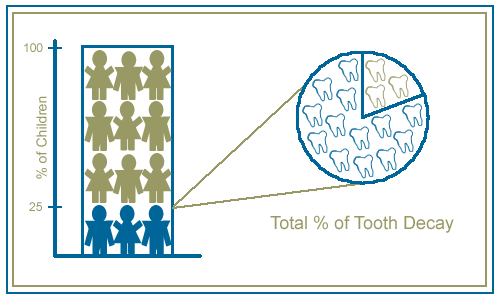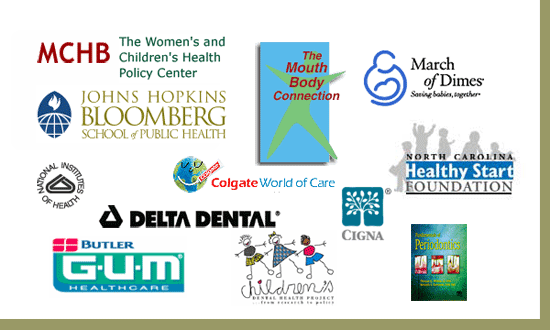
Oral Health and Health Care
Introduction
Despite great strides in improving oral health, disparities still exist across all population groups. According to Healthy People 2010’s Oral Health Chapter and the US Surgeon General’s Report, Oral Health In America, those suffering the worst oral health are:
- The poor, particularly young children and older Americans
- Racial and ethnic minorities
- Medically and developmentally compromised individuals.
The two most prevalent oral diseases are Tooth Decay (Dental Caries) and Periodontal Disease.
- Both are infectious, chronic, progressive, and highly prevalent.
- Both - if left untreated – result in pain, infection, dysfunction, and missed work or school.
- Both are overwhelmingly preventable through self-care.
- Both can be approached through disease management strategies in early stages yet require surgical interventions if allowed to progress.
Caries is primarily a disease of childhood – typically established during infant and toddler years and continuing throughout life. Periodontal disease is primarily a disease of adulthood – typically established during the adolescent years and also continuing throughout life.
Introduction Video Material
Tooth decay
Although preventable – dental caries remains the single most common, chronic disease of childhood; 5 times more prevalent than asthma (1).
Prevalence : According to Healthy People 2010, one quarter (23%) of all US children have cavities by age 4. By second grade, one-half (50%) of all US children have experienced caries. This tremendous but unrecognized prevalence explains why the U.S. Surgeon General called pediatric caries “the nation's silent epidemic.”
Distribution : This disease is highly concentrated in low-income and minority children as 80% of the disease is localized in only 25% of children

NHANES III, US Centers for Disease Control and Prevention
Unmet need : Among children reported by their parents to have one or more unmet healthcare needs, three times more children have unmet needs for dental care than medical. Fully one-quarter of parents whose children have special healthcare needs report unmet needs for dental care.

Newacheck et al Pediatrics 2000 from NHIS
| NHANES III Findings and Consequences of Poor Oral Health in Young Children |
Consequence : Untreated dental disease results in pain, infection, dysfunction, distraction from learning, and may inhibit general growth and development because of associated nutritional liabilities
Periodontal disease
Periodontitis is a chronic infectious and inflammatory disease of the gums and tooth-supporting bone. It is the single most common cause of adult oral dysfunction and tooth loss. It is typically painless until well advanced and produces few signs other than bleeding gums.
Prevalence : Periodontal disease affects half (48%) of US adults and is particularly destructive in one-fifth (22%) of US adults
Distribution : Like childhood caries, periodontal disease disproportionately impacts people with low income, minority status, and low educational attainment.
Consequence : Periodontal disease is a recognized risk factors for heart disease, inadequate glycemic control in diabetics and putatively for poor pregnancy and birth outcomes. The US Surgeon General alerted the public to the link between periodontal disease and poor birth outcome in 2001.
 |
“ The evidence associating moderate to severe periodontal disease in pregnant women with low-weight preterm births warrants attention to the importance of maintaining optimal oral health in pregnancy. The oral care clinician can contribute to birth defect prevention not only by treating oral disease, but also by providing educational messages to patients to promote the birth of healthy, full-term babies. ”. |
The public policy issue: Although the science is as yet uncertain and clinical intervention trials are now underway at NIH, a number of leading public and private agencies have begun to alert women of childbearing age about the mouth-pregnancy relationship.

Learning Objectives of Opening the Mouth
The following learning objectives can be met by reviewing the entire Opening the Mouth program.
- Describe the connection between oral health and overall health
- Characterize dental caries as an infectious, transmissible, communicable disease
- State the prevalence, acuity and consequence of dental disease
- Differentiate the dental care finance, delivery and workforce issues from analogous medical care issues
- List general action steps that can be taken to decrease oral health disparities
- Describe action steps specific to Title V Maternal and Child Health Federal Block Grant programs that can be taken to decrease oral health disparities
To learn about these maternal-child oral health issues—from conception through toddler years—you can follow the experience of Mrs. Perez and her daughter Maria by clicking on the navigation links below or at left or on the pictures below.
 |
 |
 |
 |